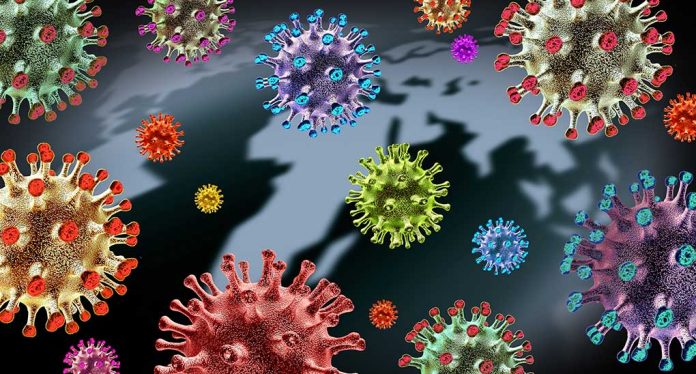
Scientists have created miniature bat organs in the lab that could help prevent the next pandemic by revealing how deadly viruses jump from bats to humans.
Key Takeaways
- Korean researchers have developed the world’s largest bat organoid platform, using mini-organs from five bat species to study how viruses like COVID-19 and MERS interact with their hosts.
- The platform successfully discovered two new bat viruses, including one that couldn’t grow in standard lab cultures but thrived in the organoid system.
- Over 75% of new human infectious diseases originate from animals, with bats being natural carriers of dangerous viruses, including SARS-CoV-2 and MERS-CoV.
- This breakthrough allows for safer study of dangerous pathogens and more accurate testing of antiviral drugs in bat tissue before human trials.
- The initiative supports global biosecurity efforts by investigating how viruses cross species barriers and aims to become a standardized resource for pandemic preparedness.
Revolutionary Platform Mimics Multiple Bat Organs
Scientists at the Institute for Basic Science (IBS) in Korea have developed a groundbreaking research platform that could transform our ability to predict and prevent future pandemics. The bat organoid system creates miniature versions of bat organs in laboratory conditions, allowing researchers to study how viruses interact with their natural hosts without the dangers and limitations of working with live animals. The platform includes mini-organs grown from the trachea, lungs, kidneys, and small intestines of five different bat species from Korea and Europe, offering an unprecedented view into the viral reservoirs that have spawned some of humanity’s most devastating disease outbreaks.
“Reconstructing bat organ physiology in vitro empowers us to dissect zoonotic virus biology with unprecedented precision, a vital step toward mitigating future outbreaks before they reach humans,” said Dr. Koo Bon-Kyoung.
Unlike previous research models that focused on single organs or used conventional cell cultures, this comprehensive system replicates the actual cellular environments where viruses naturally replicate in bats. This advancement is particularly significant given that over 75% of emerging infectious diseases in humans originate in animals, with bats serving as natural hosts to many dangerous pathogens, including the virus responsible for the COVID-19 pandemic. The platform reveals critical differences in how viruses infect and replicate across different bat species and organs, potentially explaining why some viruses can make the deadly leap to human hosts.
Discovering New Viruses and Testing Treatments
The bat organoid platform has already demonstrated its value by successfully isolating and characterizing two previously unknown bat viruses. Remarkably, one of these viruses could not be grown in standard laboratory cell cultures but thrived in the organoid system, highlighting how this technology can uncover elusive pathogens that might otherwise remain hidden until causing outbreaks. This capability to detect and study novel viruses before they spread to humans represents a major advancement in our pandemic early warning systems, especially as globalization and environmental changes increase the risk of viral spillovers between species.
“This platform lets us isolate viruses, study infections, and test drugs all within one system — something you can’t do with ordinary lab cell models. By mimicking the bat’s natural environment, it boosts the accuracy and real-world value of infectious disease research,” said KIM Hyunjoon.
Another crucial advantage of the platform is its ability to test potential antiviral treatments in a bat cellular environment. Researchers can convert the three-dimensional organoids into two-dimensional cell cultures for rapid drug screening, providing more reliable predictions of how treatments might perform against bat-borne viruses. This capability could significantly accelerate the development of effective countermeasures when new viral threats emerge, potentially saving countless lives by having treatments ready before outbreaks reach pandemic proportions.
Understanding Bat Immunity and Global Pandemic Prevention
One of the most intriguing aspects of bat biology is their ability to carry potentially deadly viruses without becoming ill themselves. The organoid platform allows researchers to explore the unique immune responses that vary between bat species and organs, potentially unlocking secrets that could help humans better combat viral infections. By understanding how bats coexist with viruses that would devastate human populations, scientists may discover new approaches to antiviral treatments or preventative measures that work by mimicking aspects of bat immunity.
“With these standardized and scalable bat organoids, we aim to systematically identify novel bat-origin viruses and screen antiviral candidates targeting pathogens with pandemic potential,” said Dr. CHOI Young Ki.
The researchers plan to expand their bat organoid biobank to include more species from viral emergence hotspots around the world, creating a comprehensive resource for international biosecurity efforts. This initiative aligns with President Trump’s emphasis on strengthening America’s pandemic preparedness capabilities and reducing dependence on foreign health organizations. By supporting advanced technology for monitoring and studying potential pandemic threats at their source, the world can develop more effective strategies to prevent future global health crises without resorting to the economically devastating lockdowns that characterized the COVID-19 response.





